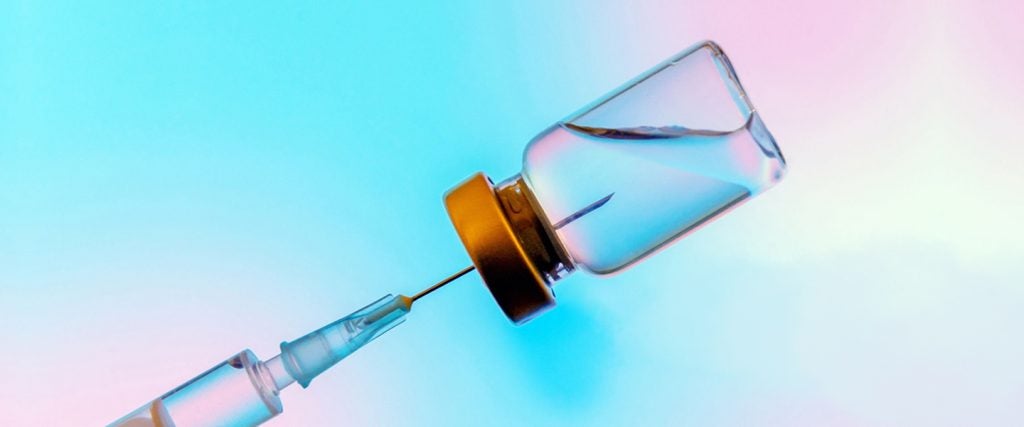Twenty-six-year-old Ryan has always had a complicated relationship with their body. “I had top surgery in 2020, which was great,” they explain. “But I still get referred to as ‘she,’ and I still get called a ‘girl.’ It makes me very uncomfortable.” And so, they’re exploring options to transition hormonally. After years of careful consideration, they’ve settled on a potential solution: microdosing testosterone.
The effects of hormone therapy are almost entirely reversible, but there’s a pretty long list of them. For masculinizing hormones like testosterone, these include facial hair growth, deepening of the voice, an enlarged clitoris and a more angular, “masculine” body shape. For feminizing hormones like estrogen, expect softer skin, less body hair and small “buds” under the nipples, the first signs of breast development.
Instead of diving headfirst into these changes, a growing number of trans people like Ryan (a pseudonym) are microdosing hormones to slow them down. “I want the changes to be gradual,” they tell me. “That way, if there’s something I don’t like, I can stop it almost immediately without it getting worse.” Microdosing is also a useful tool for nonbinary people, who don’t necessarily want to look stereotypically “male” or “female.” In fact, microdosing is kind of like hacking gender presentation — by taking small doses of hormones, it’s possible to make subtle changes that fuck with binary assumptions of what trans people should look like.
But what constitutes a microdose, exactly? When it comes to gender-affirming hormones, the jury is out. There are various ways to administer hormones — gels, patches, creams and injections are the most popular — and doses differ based on the individual. Trans women usually start taking 200 milligrams of spironolactone before moving to estrogen and other anti-androgens, whereas trans men typically take around 50 to 100 milligrams per day of testosterone if they’re using creams and gels, or the same amount per week for injections.
In other words, it’s not an exact science. As with most trans health-care-related topics, there’s a dearth of information, and online support groups and forums generally offer way more wisdom than most medical resources. “There’s some confusion about what microdosing entails,” confirms Vic Parsons, a gender and identity reporter at PinkNews. “That’s partly because the effects of taking hormones are so unique to each person, and partly because there’s a dire lack of trans-led research into trans health care.” Plus, what might constitute a “microdose” for one person could have very different effects on another.
That said, some doctors are still willing to help. Karen, also a pseudonym, is a closeted trans woman who decided she wanted to pursue hormonal transition around two years ago. Nervous about coming out as trans to her wife and kids, she tracked down a trans-friendly practitioner through a series of online forum recommendations, and explained that she “wanted to go slow, for social reasons.” In response, the doctor gave Karen 200 milligrams per day of spironolactone. Soon afterwards, she added a one-milligram tablet of estrogen each day. “She told me that was the dose she gave to androgynous and non-binary people who wanted limited changes,” Karen continues. “My goal was de-masculinization, but in a way that I could hide the changes.”
Shortly thereafter, she noticed her nipples “budding” and immediately panicked — her growing breasts were at risk of sparking a conversation she wasn’t ready for. The doctor’s solution was to reduce Karen’s dosage of estrogen to half a pill every other day, an effective “microdose.” But despite slowing the effects, Karen stopped taking hormones — she didn’t want to be outed, and wasn’t ready to come out herself.
Still, the option of microdosing is always there — by allowing more control over transitions, it can alleviate a huge amount of stress.
Ideally, these decisions would be made in close conjunction with a doctor, but for myriad reasons, that’s not always the case. “It makes me uncomfortable having to explain to some medical professionals why I got top surgery,” says Ryan. “I try to get recommendations of gender-affirming doctors so that I don’t have to answer awkward questions, and to also know that I’ll be respected and they’ll use the right terminology.”
While there are some trans-educated doctors who can be found through resources like the GLMA database and trans-led health-care services like FOLX, some trans and non-binary people are faced with under-educated doctors who might not know how to address hormone microdosing, or even transitioning at all. There are a number of horror stories on Reddit of doctors outing trans people to their transphobic parents, and many more about medical professionals using “harmful” language when talking about gender confirmation surgeries. So, although some trans people might hit the jackpot and find an educated, gender-affirming practitioner, the thought of rolling the dice can be enough to scare some of them off.
As such, plenty of trans people self-administer hormones or buy them black on the black market. Private, trans-led Facebook groups are basically mutual aid at its finest — in these closed-off hubs of connection, plenty of trans people stockpile hormones and pass them on to those who couldn’t access them otherwise. “DIY trans health care is a response to cis doctors gatekeeping hormone access,” explains Parsons. “Just like with abortion access, making it hard for trans people to get hormones from a doctor — or criminalizing trans health care entirely, as Republicans are attempting to do in several states — doesn’t stop trans people taking hormones. It just pushes those who want to take them into situations that are arguably less safe.”
As always, these conversations are nothing new. In 2003, philosopher Paul B. Preciado released Testo Junkie, an experimental “body-essay” about the joys of self-administering testosterone. “I’m not taking testosterone to change myself into a man or as a physical strategy of transsexualism,” he writes. “I take it to foil what society wanted to make of me, so that I can write, fuck, feel a form of pleasure that is post-pornographic.”
In a world filled with medical gatekeeping and outdated, binary definitions of what it means to be, look or act trans, microdosing is the perfect way to seize autonomy over a hormonal transition. “Taking a low dose of hormones can give non-binary people more room to be playful and true to themselves in how they present their gender,” concludes Parsons. “It’s the ultimate, self-evident non-binary flex.”

